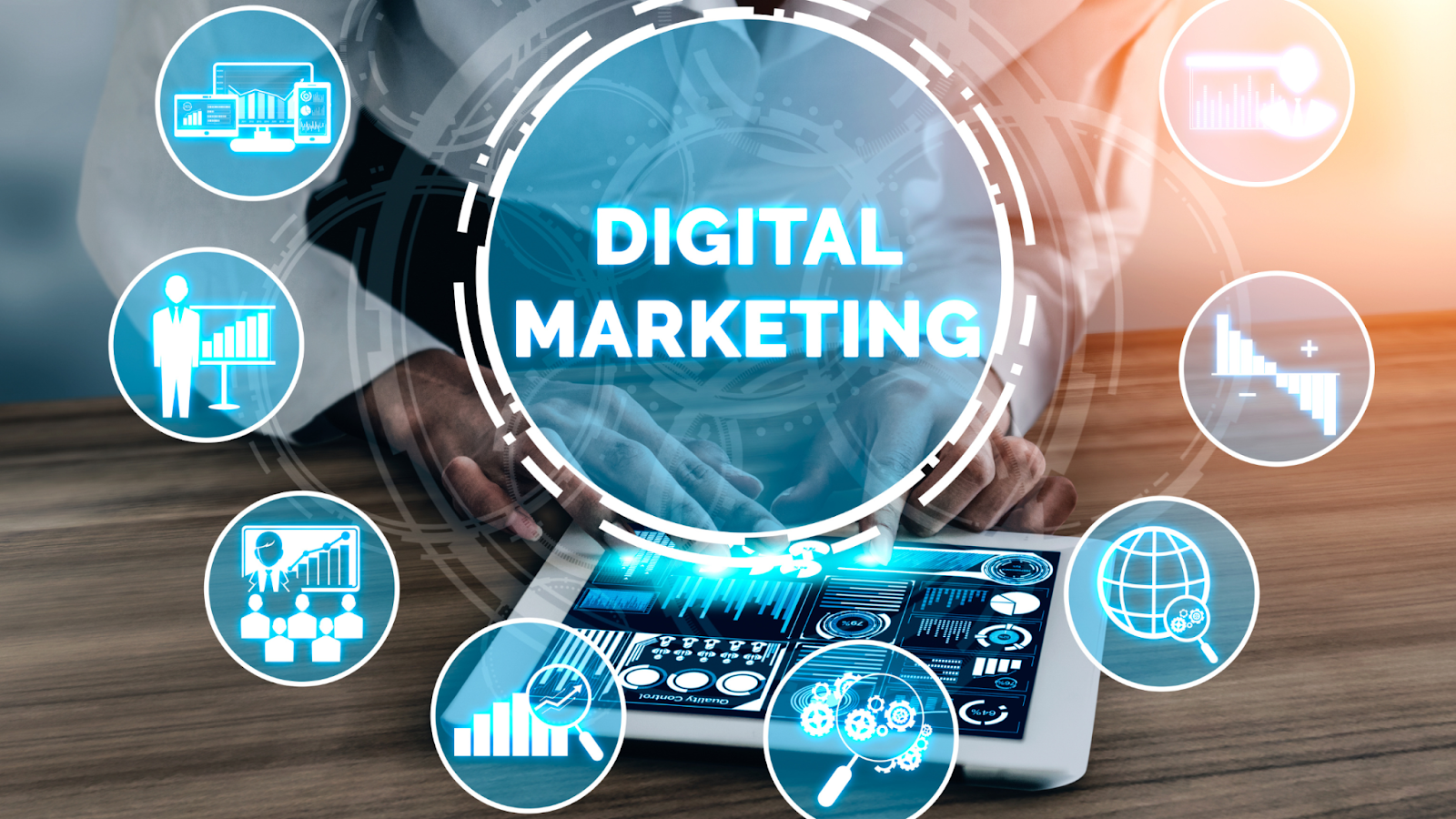
The world of digital marketing is evolving at lightning speed, and 2025 is shaping up to be a game-changer. Every year, new technologies emerge, consumer behaviors shift, and marketing strategies become more innovative. But this year? It’s different. The digital landscape is not just changing; it’s being transformed. From AI that learns and adapts to immersive experiences that blur the line between reality and virtual, the possibilities are limitless.
If you’re not already thinking ahead, you’re falling behind. The strategies that worked yesterday may not work today, and what works today may not work tomorrow. In 2025, the key to staying ahead is understanding the trends that are not just shaping the future—they are the future.
In this blog, we’ll break down the most exciting, disruptive, and impactful digital marketing trends you need to know. These trends aren’t just a flash in the pan—they’re the driving forces behind the next wave of success in digital marketing. Ready to future-proof your marketing strategy? Let’s dive in and explore the trends that will define 2025 and beyond.
1. Artificial Intelligence (AI) and Machine Learning Integration
Artificial Intelligence (AI) and machine learning have already become integral parts of digital marketing strategies, and in 2025, their influence is stronger than ever. These technologies allow marketers to personalize customer experiences, enhance predictive analytics, and automate tasks, making marketing efforts more efficient and effective.
AI’s ability to process and analyze large datasets has transformed how brands engage with consumers. By understanding consumer behavior and predicting future actions, AI enables marketers to deliver hyper-targeted content that resonates with individual customers. According to PwC, 72% of business leaders believe AI will be a business advantage in the near future (PwC, 2024). This makes AI indispensable for marketers looking to gain a competitive edge in 2025.
Machine learning is helping marketers optimize campaigns in real-time, enabling continuous improvements in targeting and engagement. This technology can predict trends, analyze customer journeys, and help brands deliver the right message at the right time, improving conversion rates.
2. Voice Search Optimization
The growing popularity of voice-activated devices has made voice search optimization a critical component of SEO strategies in 2025. With the number of voice-activated devices expected to surpass 8 billion globally, according to Statista (Statista, 2024), voice search is no longer a trend—it’s a mainstream behavior.
Voice search queries tend to be more conversational and natural compared to traditional text-based searches. As a result, marketers need to adjust their SEO strategies by focusing on long-tail keywords and question-based phrases that align with voice queries. For example, instead of typing “best pizza near me,” a user might ask, “Where can I find the best pizza nearby?”
Marketers should also focus on local SEO, as voice searches often have a local intent. By optimizing for location-based keywords and ensuring business listings are accurate across search engines and maps, brands can capture voice search traffic and enhance their visibility in 2025.
3. Video Marketing Dominance
Video marketing continues to reign supreme in 2025, with brands leveraging video content to drive engagement, conversions, and brand loyalty. According to Cisco’s Annual Internet Report, video now accounts for 82% of all internet traffic (Cisco, 2024), making it the most dominant content format.
Short-form videos, especially on platforms like TikTok and Instagram Reels, have gained immense popularity due to their ability to capture attention quickly and deliver impactful messages in a short amount of time. Live streaming is also on the rise, allowing brands to engage with their audiences in real-time, creating a sense of urgency and authenticity.
For brands to succeed in video marketing in 2025, it’s crucial to create engaging, high-quality content that resonates with their audience. Interactive video content—such as shoppable videos and 360-degree videos—will further enhance the viewer experience, allowing consumers to interact with products in a more immersive and engaging way.
4. Interactive and Immersive Content
The rise of augmented reality (AR) and virtual reality (VR) is revolutionizing how brands engage with consumers. In 2025, interactive content is expected to dominate, providing consumers with immersive experiences that go beyond traditional marketing methods.
Augmented reality (AR) allows consumers to interact with products virtually before making a purchase. For example, beauty brands like Sephora and L’Oreal have already implemented AR to allow customers to try on makeup virtually. According to a Deloitte survey, 50% of consumers are interested in using AR to try products before buying (Deloitte, 2024). As AR technology becomes more accessible, marketers will need to incorporate it into their strategies to provide more engaging and personalized experiences.
Virtual reality (VR), while still emerging, is expected to gain significant traction in 2025. VR can transport consumers into fully immersive environments, offering virtual tours, product demonstrations, and unique brand experiences. Brands in industries such as real estate, automotive, and tourism are already experimenting with VR to offer customers a more interactive experience.
By integrating AR and VR into their marketing strategies, brands can create more memorable, interactive experiences that foster deeper connections with their audience.
5. Privacy and Data Security Focus
As data privacy concerns continue to rise, marketers must prioritize ethical data collection and security to build trust with their customers. A McKinsey report revealed that 63% of consumers are concerned about how companies use their personal data (McKinsey, 2024). In 2025, this trend will only intensify, with consumers demanding more transparency and control over their personal information.
With privacy regulations such as GDPR and CCPA in place, marketers must ensure compliance with evolving data protection laws. Brands that prioritize data security and clearly communicate their privacy policies will build stronger relationships with their customers, fostering loyalty and trust.
To stay ahead, marketers should adopt privacy-first strategies, such as offering consumers clear choices about data collection and providing easy access to data management tools. By doing so, brands can enhance their reputation and maintain long-term customer relationships.
6. Social Commerce Growth
Social commerce is rapidly growing in 2025, as social media platforms continue to evolve into powerful e-commerce hubs. With Instagram, Facebook, TikTok, and other platforms integrating shopping features, consumers can now purchase products directly through their social media feeds. According to eMarketer, social commerce sales are projected to reach $80 billion by 2025 (eMarketer, 2024), a clear indication of the growing importance of social commerce.
To capitalize on this trend, brands must create a seamless shopping experience within social media platforms. This includes ensuring that product listings are easy to navigate, the checkout process is smooth, and customer support is readily available. By integrating shoppable posts, product tags, and live-streamed shopping events, brands can drive sales and increase engagement.
Influencers and user-generated content will continue to play a key role in social commerce, as consumers trust recommendations from people they follow. Brands should leverage influencer partnerships and encourage user-generated content to build credibility and trust with their audience.
7. Sustainability and Purpose-Driven Marketing
In 2025, sustainability and purpose-driven marketing are no longer optional—they are essential for building consumer loyalty. As Millennials and Generation Z become the dominant consumer groups, brands that align with social causes and environmental responsibility will gain a competitive advantage.
A Nielsen report found that 73% of global consumers are willing to pay more for sustainable products (Nielsen, 2024). This trend reflects the growing consumer demand for brands that prioritize environmental sustainability, ethical sourcing, and corporate social responsibility.
In 2025, brands must be transparent about their sustainability efforts and showcase their commitment to social causes. Whether through eco-friendly packaging, carbon-neutral shipping, or supporting local communities, brands that demonstrate a genuine commitment to sustainability will resonate with today’s conscious consumers.
Conclusion
As we progress through 2025, the digital marketing landscape is evolving faster than ever. From the rise of AI and voice search optimization to the growth of social commerce and immersive content, marketers must embrace these trends to stay competitive. By focusing on personalization, privacy, and innovation, brands can create meaningful, engaging experiences that resonate with their customers, foster loyalty, and drive growth.
The future of digital marketing is exciting, and those who stay ahead of these trends will be well-positioned to succeed in the years to come.


